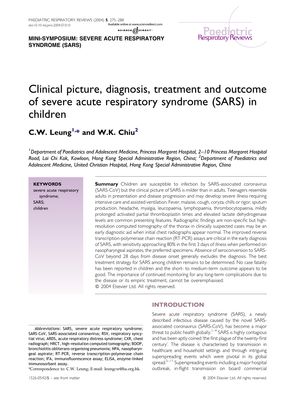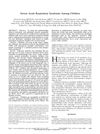Clinical Picture, Diagnosis, Treatment, and Outcome of Severe Acute Respiratory Syndrome (SARS) in Children
November 2004
in “
Paediatric Respiratory Reviews
”

TLDR Children generally have milder SARS symptoms than adults, with good outcomes and no deaths reported, but long-term effects are unclear.
The document from 2004 examines SARS in children, noting that while children are susceptible to SARS-CoV, they typically have milder symptoms than adults, except for teenagers who may experience more severe illness. Symptoms include fever, malaise, cough, and gastrointestinal issues, with fever and respiratory symptoms being most common. HRCT is useful for early diagnosis, and RT-PCR assays have about 80% sensitivity early in the illness. No child fatalities were reported, and outcomes were generally good, though long-term effects were unknown. The study specifically mentions managing a cohort of 64 laboratory-confirmed pediatric patients but does not provide a global number of children studied. It also highlights the importance of epidemiologic links for diagnosis and the use of RT-PCR and serological testing for confirmation. Treatment regimens during the outbreak included antibiotics, ribavirin, and corticosteroids, but their efficacy was uncertain, and no evidence-based treatment was established. The document concludes that further research is needed to determine effective treatments and understand the long-term effects of SARS on children. Notably, 41.5% of children experienced hair loss 2-3 months after disease onset, which resolved within 1-3 months, and some had mild radiologic and pulmonary function abnormalities at 6 months post-diagnosis.

